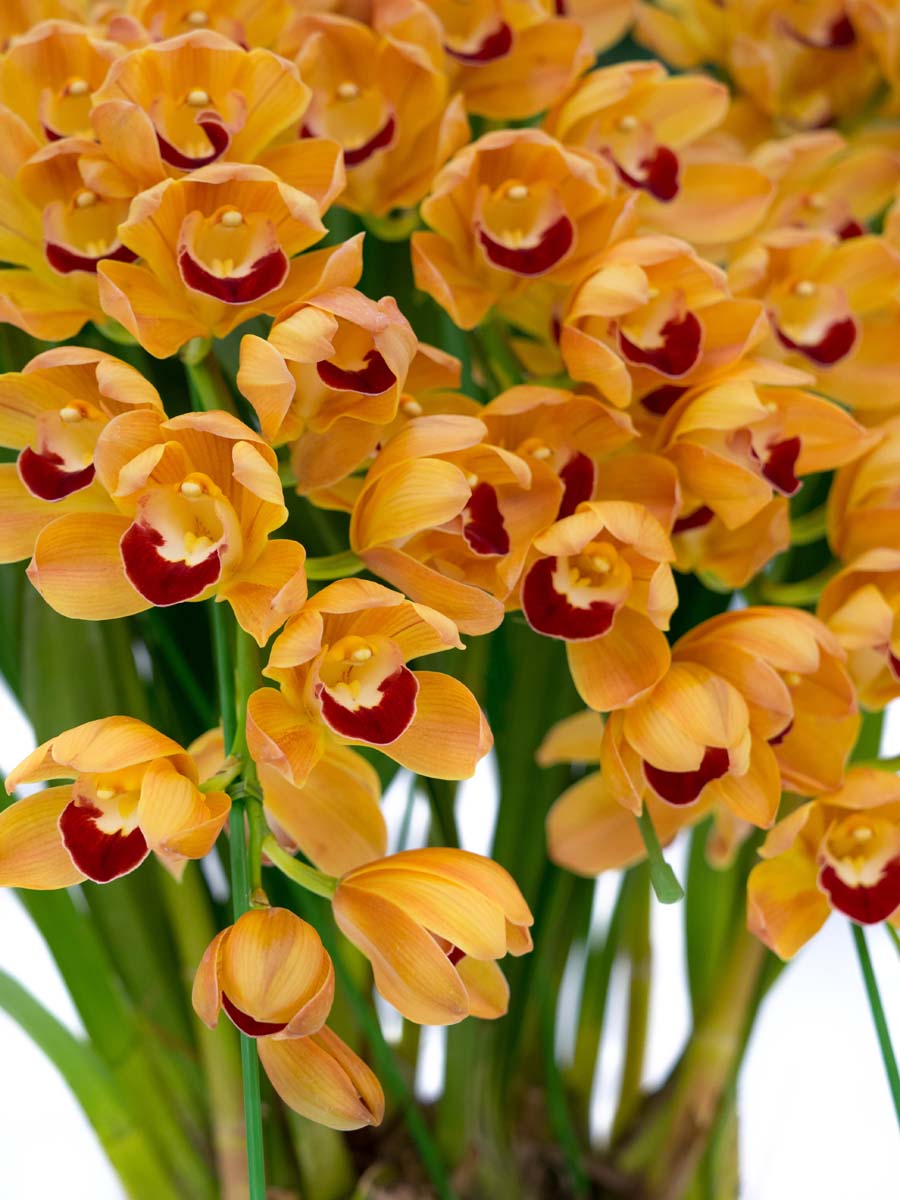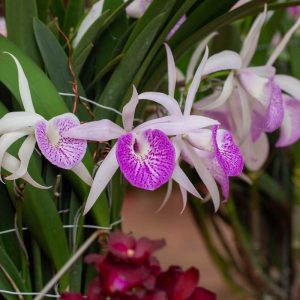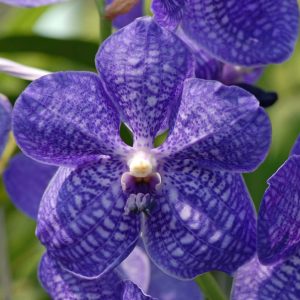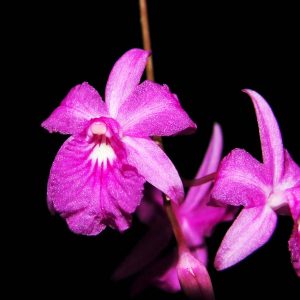Description
Cymbidium –
There are about 50 species of evergreen, epiphytic, lithophytic, or terrestrial orchids, in this genus. They occur from temperate and tropical areas in India, China, Japan, Southeastern Asia, to Eastern Australia. They have spherical to elongated pseudobulbs and 8-10 long, narrowly oval to linear, light to mid green, arching leaves. Flowers are borne in erect or pendulous long or short racemes of up to 30 from the bases, mainly in spring in many combination of green, yellow, white, pink, dull red or brown, with the labellum usually marked red and individual flowers can be 4″ across. Many hundreds of winter or spring flowering hybrids have been produced as well as miniature hybrids. Grow as houseplants or in a cool or temperate greenhouse. Contact with the foliage may aggravate skin allergies.
Cool growing orchids (see chart below). Some of the larger species and hybrids will tolerate short periods of 25 degrees Fahrenheit. Pot firmly into epiphytic or terrestrial orchid potting mix with added charcoal and bone meal. In summer, provide bright filtered light and good ventilation. Water moderately, applying fertilizer at every third watering, and mist once or twice a day. In winter place in full light and water sparingly. Divide in early and mid spring when pot bound.
Prone to cymbidium mosaic virus, ringspot virus, odontoglossum ringspot virus, root rot, gray mold, bacterial soft rot, spider mites, scale insects, mealy bugs, and pseudobulbs rots.






